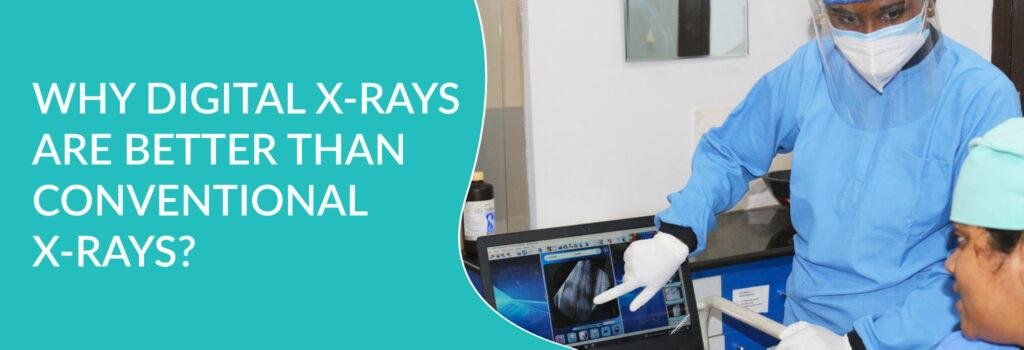
Introduction
Radiographs are a crucial part of dentistry. Those are the starting point for the diagnosis of a variety of clinical situations in the dental practice.Radiographs are discovered by the physics professor called Wilhelm roentgen in 1895.
Conventional Radiographs - Advanced Dental Technology
Advanced Dental Technology, Conventional x-rays are of two types with intraoral and extraoral X-rays. These x-rays use radiation to interact with the teeth, gums, and bones in and around the mouth. This interaction produces x-ray image on film, which a dentist would develop and use to diagnose any oral health issues.
Digital Radiographs
Digital radiography combines the power of computer technology with electronic sensors and very small bursts of radiation. Instead of printing out on a film, the image forms almost as soon as sensor is placed in the mouth and projects to computer screen.
Why are Digital X-rays better over Conventional X-rays
- Digital dental x-rays are cheaper ,quicker, clearer, and safer than normal radiography.
- Digital x-rays allow easier storage of your oral health records.
- Unlike conventional x-ray images, digital onesare kept in a computer system, which has virtuallyunlimited storage space. This makes it easier to transfer from one dentist to the next without losing any of your medical data.
- Conventional x-rays can only project images in 25 different shades. Meanwhile, a digital image can pick up variations of upto 256 shades of Grey
- If you get anxious about the dentist, its likely because you feel uncomfortable with all the unfamiliar sights and smells. You’ll be happy to hear, them, that digital imaging procedures offer a much more comfortable experience than conventional ones.
- The most important benefit of digital x-rays over conventional ones is safety. Digital imaging may reduce radiation exposure for both patients and the dentist by up to 90% .this prevents health complications of too much radiation including Radiation sicknesses, Skin burns and increased risk of cancer.
- Digital x-rays will typically cost you less than their traditional counterpart. That’s because the cost of film to develop conventional x-ray images really adds you.
Conclusion
The world is improving drastically and shoving in the trend of modern technology, the dental world is also grabbing up rapidly with the fast stride at which technology is moving. Many practitioners are now swapping from traditional to more advanced and effective digital X-rays. Though the cost of obtaining the latter and the competency in operating the system would be a factor why some dentists are yet to go digital, however, it is worth having it in a recommendation.



